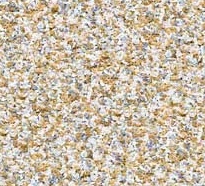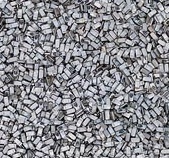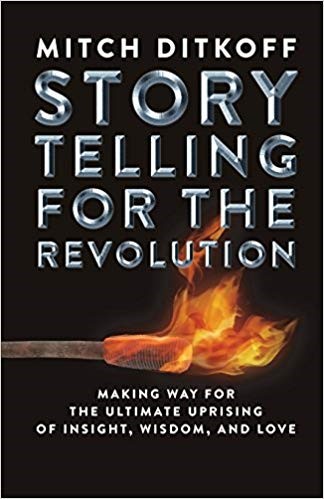Millions and Billions: The Probability of Terrestrial Life
The late science popularizer Carl Sagan once urged his readers and viewers to contemplate the millions of galaxies in the universe and consider the probability of extraterrestrial life existing somewhere outside our own planet. Today we live in a revised era, increasingly aware of humanity's impact on mothership Earth. So to shed light on our local dilemma, an innovative artist has been building a body of work that asks us to contemplate a different kind of vastness - the vastness of industrially stimulated consumerism.

Chris Jordan is a photo-montagist who creates vast wall-size panels which from a distance seem to be no more than interesting textures. Upon closer inspection though, they turn out to be created from tens of thousands of a single kind of consumable object we use and throw away: cigarettes, plastic bags, beverage bottles, aluminum cans, Vicodan tablets, cell phones. He packs these objects so tightly together that they merge into unified pointillist fields.
In one three panel set, a giant portrait of Ben Franklin turns out to be composed of 125,000 $100 bills. This number, it turns out, represents how much the United States spends each HOUR on the Iraq war - $12.5 million. Similar short clips of "consuming time" characterize most of Jordan's work: five SECONDS of plastic bags used and discarded by US Consumers (60,000 ; detail image above); a DAY's worth of cell phones discarded by US consumers (426,000, detail image below).
Because of the short time samples Jordan's montages represent, his work can convey the speed and staggering scale of industrial consumption in a way no other visualization has until now. We can grasp intuitively that these beaches of discarded goods are expanding daily, or hourly, by similar spatial units. (Four football fields of plastic bottles every five minutes. More plastic floating in the middle of the Pacific Ocean than zooplankton.)

Like grains of sand on a beach, the individual objects in Jordan's images disappear. You search for a "subject" but nothing appears in the foreground. All the objects fuse into one vast background, a disorienting blur of granular overwhelm.
Then it dawns on you: YOU'RE the subject; YOU'RE the foreground. One of those plastic beverage bottles is MY water bottle. One of those cell phones is YOUR cell phone. Each one of us, easing through a supermarket checkout line on any given day, answers the question "Paper or Plastic?" WE are the subject, the foreground.
Chris Jordan creates flat backgrounds we have to place ourselves "in front of." And this helps us intuitively comprehend our interconnectedness and our impact on our LOCAL universe. Unlike Carl Sagan's CETI vision, Jordan lets us step back and contemplate the probabilities for life - not in space but HERE, on this fragile and finite planet. He asks us to consider where the superhighway to "prosperity" as we've defined it ultimately leads.
Here's a short interview with the artist.
Post a comment
Thanks for signing in, . Now you can comment. (sign out)
(If you haven't left a comment here before, you may need to be approved by the site owner before your comment will appear. Until then, it won't appear on the entry. Thanks for waiting.)














